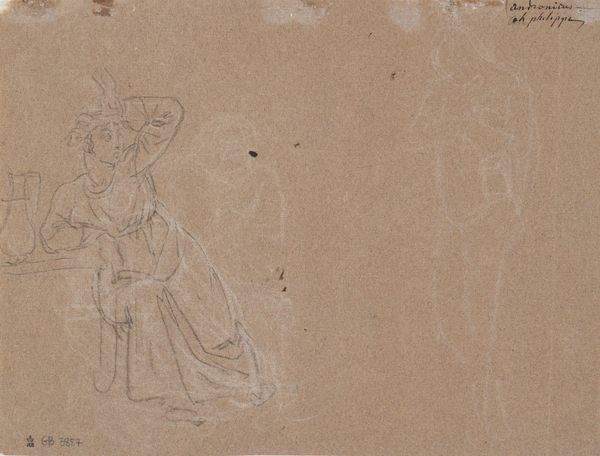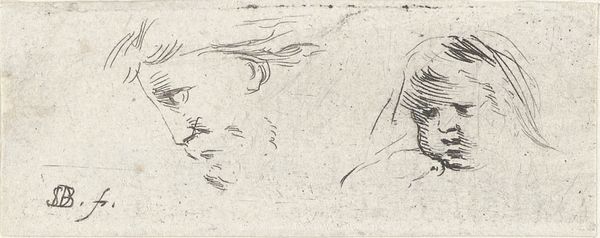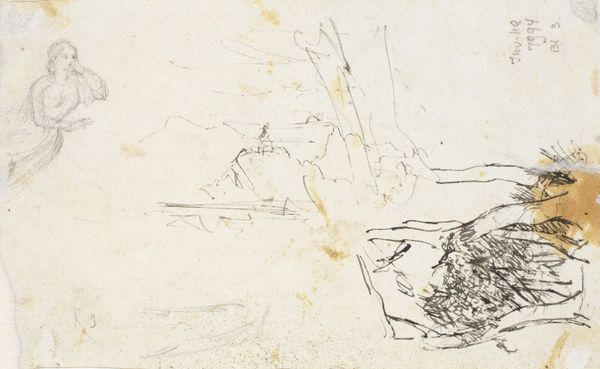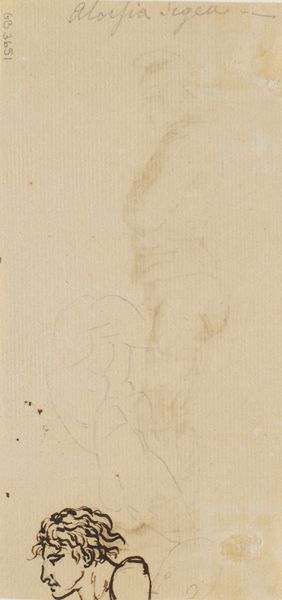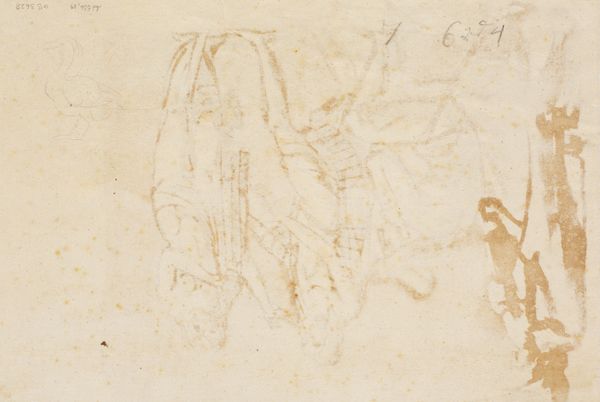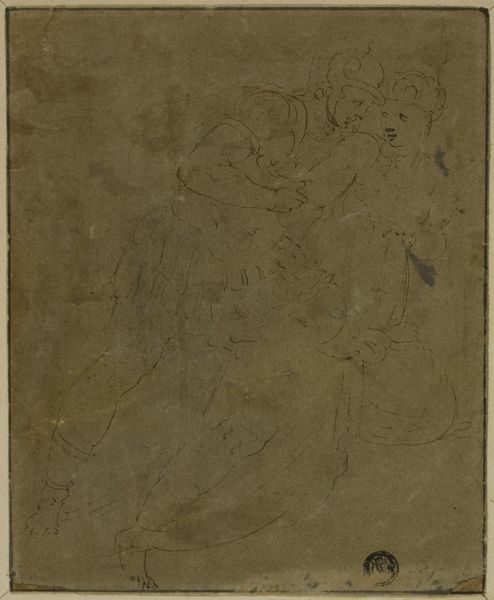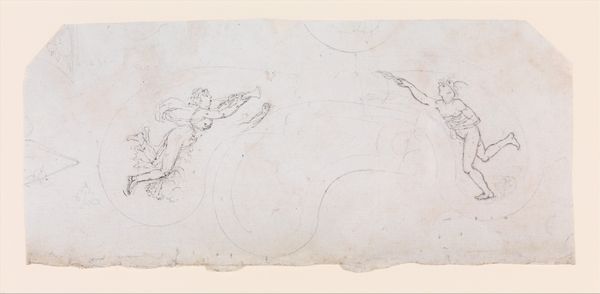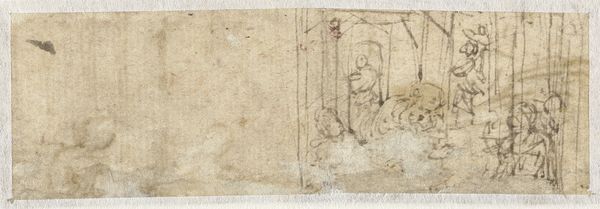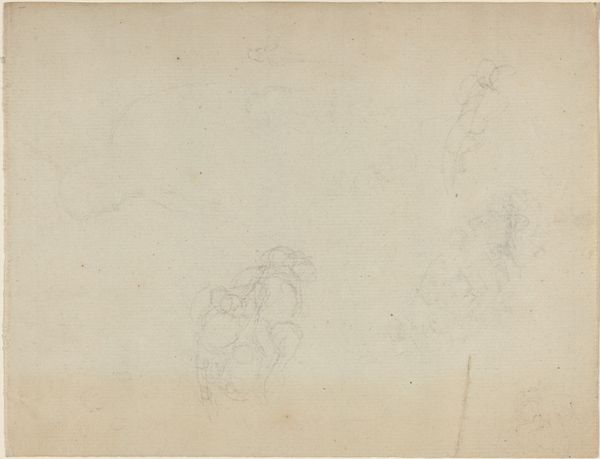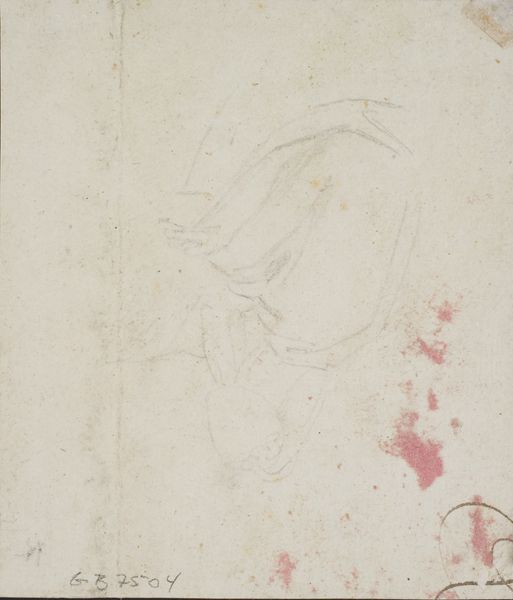
drawing, paper, pen
#
drawing
#
landscape
#
figuration
#
paper
#
11_renaissance
#
pen
#
watercolor
Dimensions: 418 mm (height) x 216 mm (width) (bladmaal)
Editor: So, here we have Heinrich Dittmers’ “Quick Compositional Sketch with Four Figures,” dating back to sometime between 1625 and 1677. It’s a pen drawing with watercolor on paper, and immediately I'm drawn to the ambiguity of the figures, they're like hazy memories. What do you see in this piece? Curator: It speaks to me of transitional states. Not just within the figures themselves, caught mid-gesture perhaps, but also within the larger cultural memory. Consider the Renaissance, a period obsessed with ideal forms. But Dittmers’ sketch seems to intentionally destabilize those forms. Where do you see evidence of that destabilization? Editor: Well, the sketchiness, I suppose? It feels unfinished, like he’s deliberately avoiding crisp outlines and clear definitions. It reminds me a bit of how trauma affects memory. Curator: Exactly. These aren’t idealized figures frozen in perfect heroic poses, are they? They appear vulnerable, almost ethereal, hinting at the psychological weight of change. It reminds us that the Renaissance, though obsessed with classical ideals, was also an era grappling with tremendous social and religious upheaval. Think of the Reformation. Editor: That makes a lot of sense. So, the haziness isn't just an aesthetic choice, but a reflection of the time itself? Curator: Precisely! Visual symbols rarely exist in a vacuum. The act of representing figures in such a tentative way… that whispers of deeper uncertainties. It's as if Dittmers is capturing not just physical forms, but the anxieties simmering beneath the surface. Editor: I see it now. It's less about the figures themselves, and more about what they represent… this in-between state, a fragile moment of transition. Curator: Indeed. This quick sketch resonates beyond its immediate aesthetic, connecting us to the psychological and cultural landscape of the time. I wonder what we aren't seeing as well? What is deliberately hidden. Editor: This has really shifted how I view art from this period. It's so much more layered than I initially thought.
Comments
No comments
Be the first to comment and join the conversation on the ultimate creative platform.
